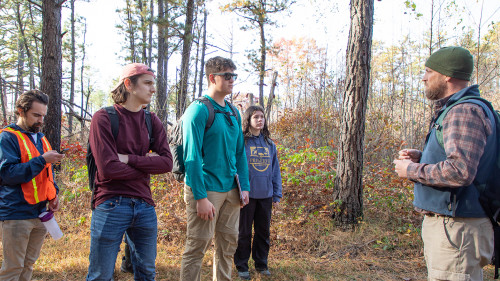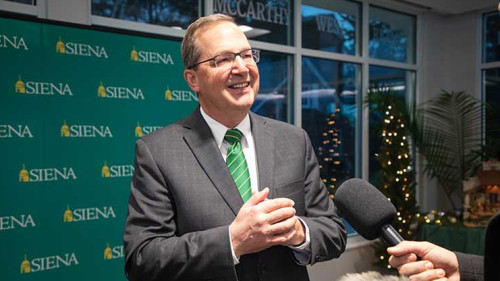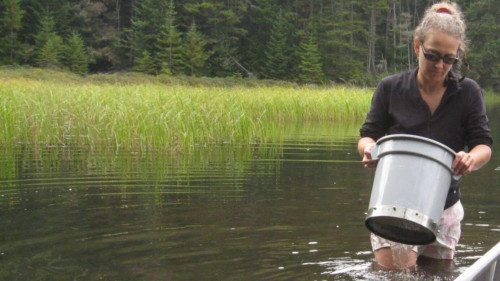
Developers are continuing to build homes and businesses farther out from city and town centers. As new structures go up and more humans move in, how does that impact forests and the mammals that live there?
Daniel Bogan, Ph.D., assistant professor of environmental studies and sciences, has received a three-year, $184,511 grant from the Northern States Research Cooperative (NSRC) to explore that very question.
Bogan is the principal investigator in a fully-funded study of the characteristics and impacts of human sprawl on the “wildland-urban interface” (WUI). He plans to select more than 20 Siena students to work with him throughout the duration of the study that will cover upstate New York, as well as Vermont, New Hampshire and Maine.
“The goal is to better understand the state of the Northern Forest and measure impacts from housing development on native biological diversity,” said Bogan. “Those findings will provide new information to guide decision makers as they update open space planning, while balancing sustainable housing development. It’s a great opportunity for our students to gain real environmental field experience.”
Bogan, his fellow investigators from the USDA Forest Service, and Siena students will develop methods to inform land use policies and practices, identify opportunities to conserve wildlife diversity, and anticipate human-wildlife interactions. To achieve this, they will compare forest structure and composition inside and outside the WUI across the Northern Forest landscape, quantifying the impacts of housing development on forest stand diversity, biomass, and regeneration, with implications for wildlife habitats.
The impact on mammals such as coyote, red and gray fox, white-tailed deer, fisher and smaller species will be explored using non-invasive camera traps, live-capture and recapture of small mammals, and vegetation sampling.
The research will kick off this summer with an initial site selection pilot project in upstate New York.
Bogan explained that across the United States, housing development in forests has created a vast and rapidly expanding wildland-urban interface. Between the years 1990 and 2010, there was a 40 percent increase in the amount of forest in WUI; results from the 2020 census are still being analyzed and are likely to show an even greater increase.
“Housing development pressure will likely continue and may accelerate due to people relocating to rural areas in response to COVID-19,” he said. “It’s important to learn from past trends to understand how future decisions will impact the region’s biological diversity.”
Lauren Costello ’23 is one of the Siena students who will be assisting Bogan in his research. She has previously done forestry-related field work and will now turn her attention to the animal side of things by setting up and maintaining camera traps.
“I love to do field work, so I’m really grateful to be part of the wildlife-related portion of this research,” said Costello. “I think this will be an amazing experience for Siena students, which will ultimately lead to new policies that will benefit the forests and wildlife of the northern New York and New England ecosystem.”
René H. Germain, Ph.D., professor and coordinator of forest resources management at SUNY College of Environmental Science and Forestry, and the New York director of NSRC, said the research topic of the wildland-urban interface is timely as increasing development and urbanization encroach on natural areas, threatening wildlife habitat and biodiversity.
"Dr. Bogan and his team offer an interdisciplinary study that will inform land use policies and practices designed to conserve wildlife diversity and better anticipate human-wildlife interactions.”
John Cummings, Ph.D., dean of Siena's School of Science, congratulated Bogan on his receipt of the NSRC grant.
"I'm very pleased that Dan's expertise in understanding human-wildlife interactions was recognized with this award. This grant will allow him to expand the scope of his work, and I'm really excited to see what he and his students will be able to learn."

